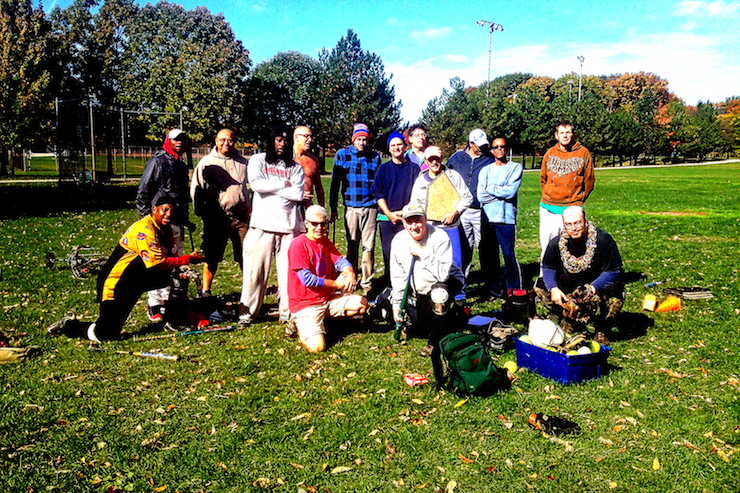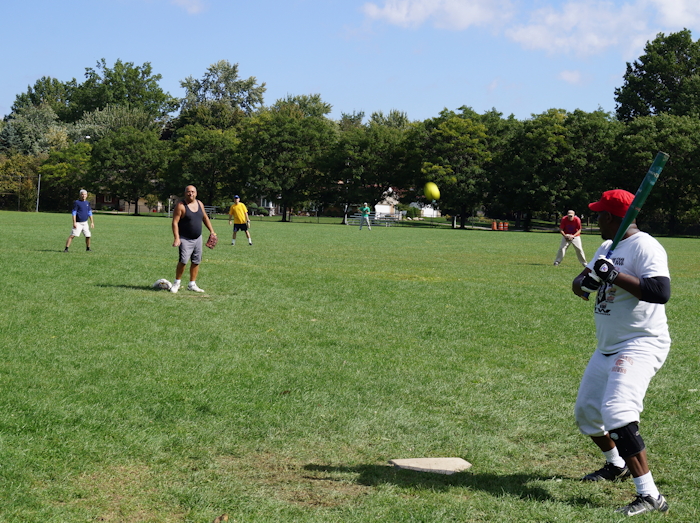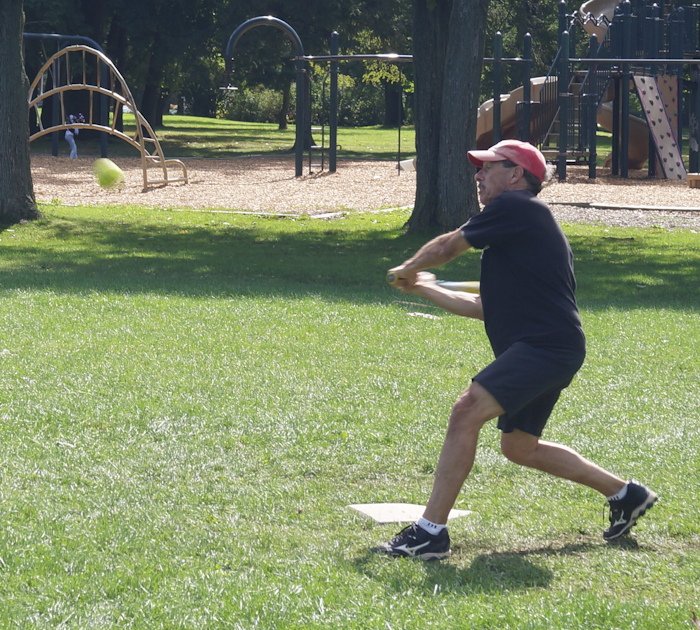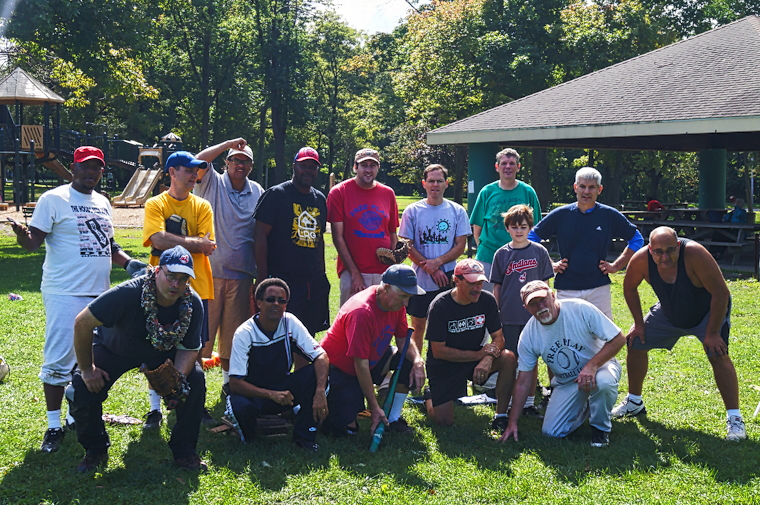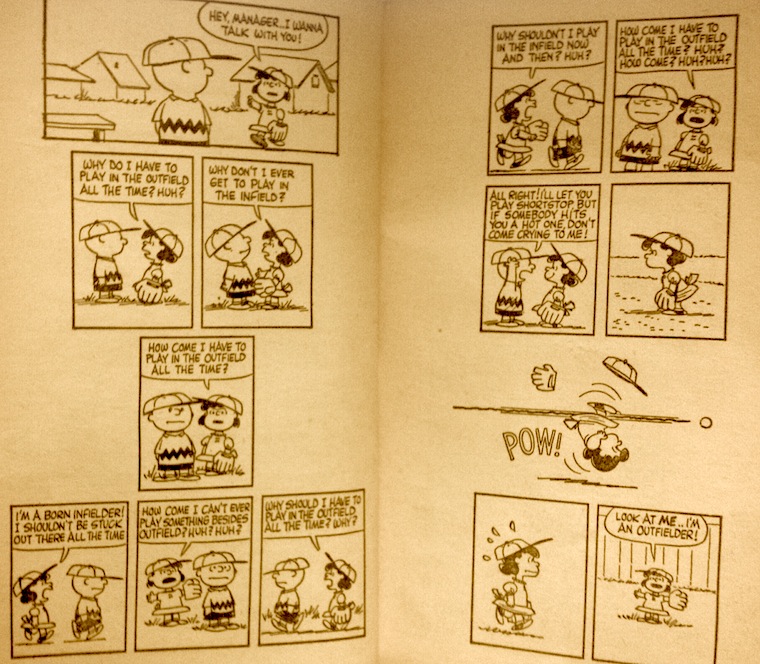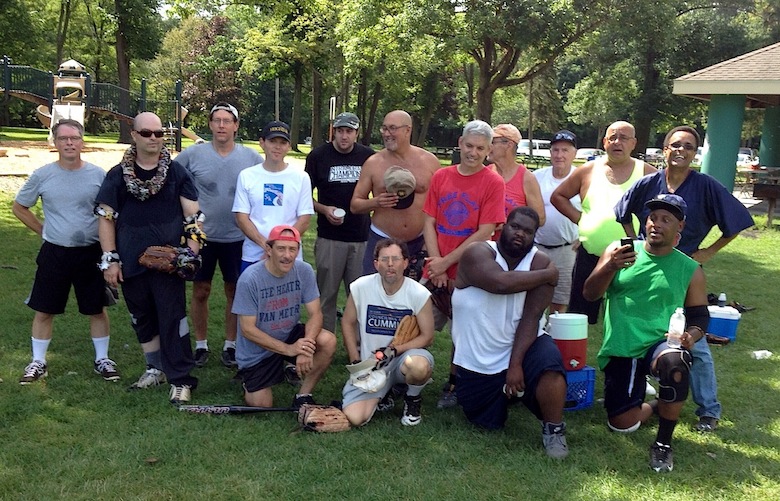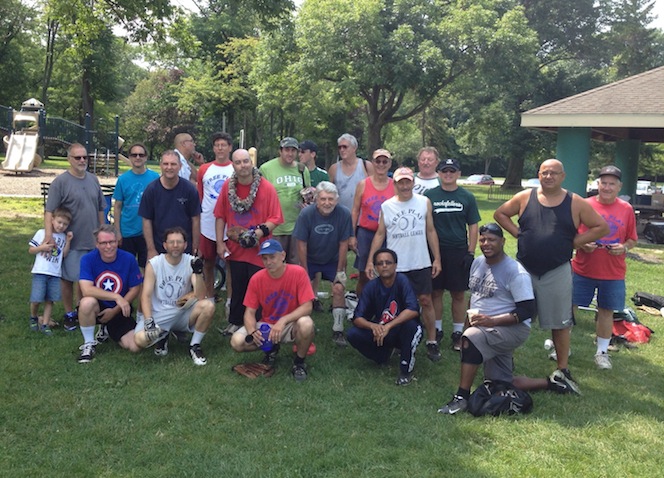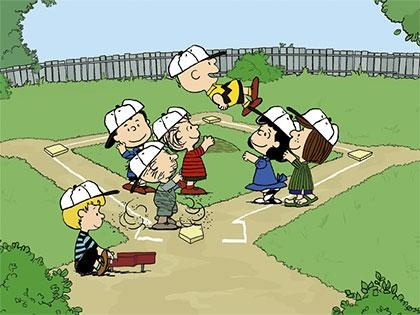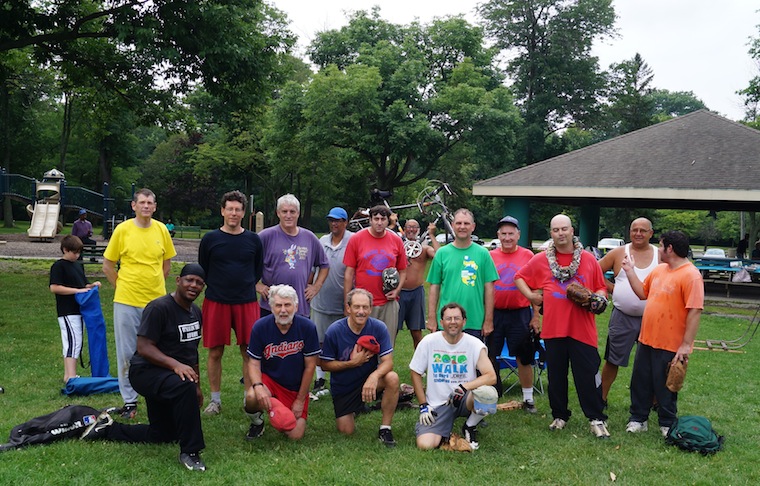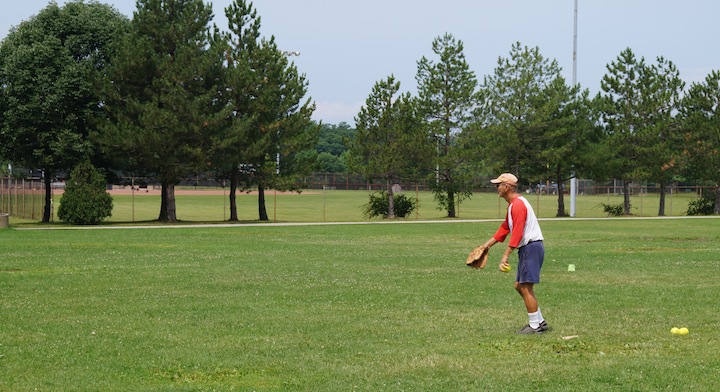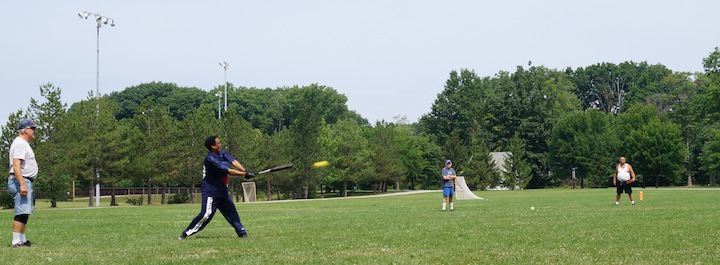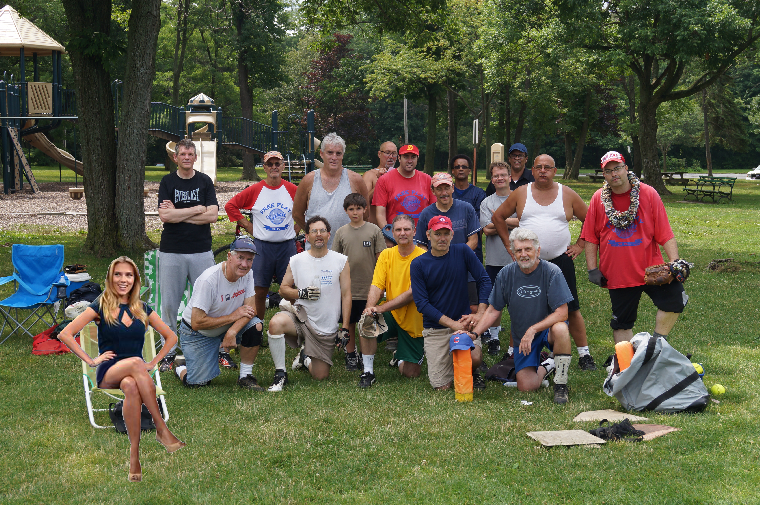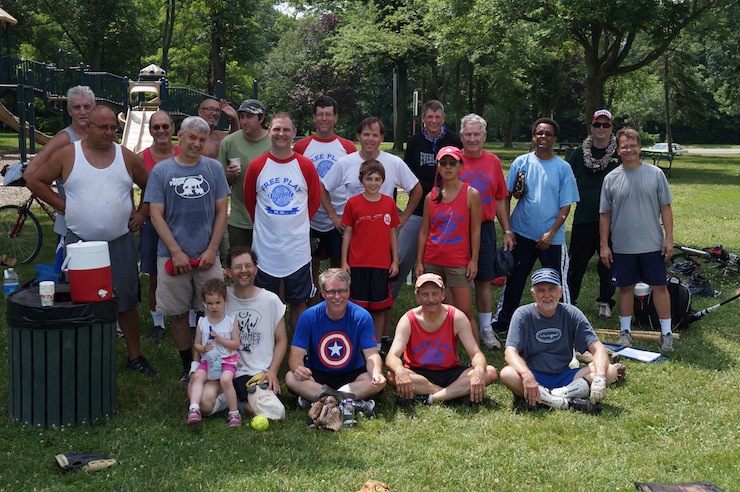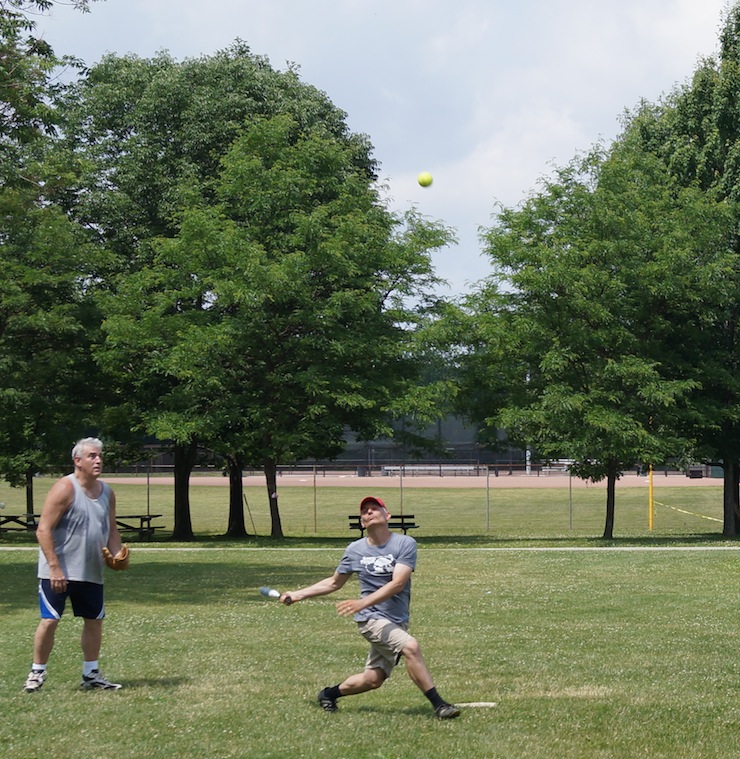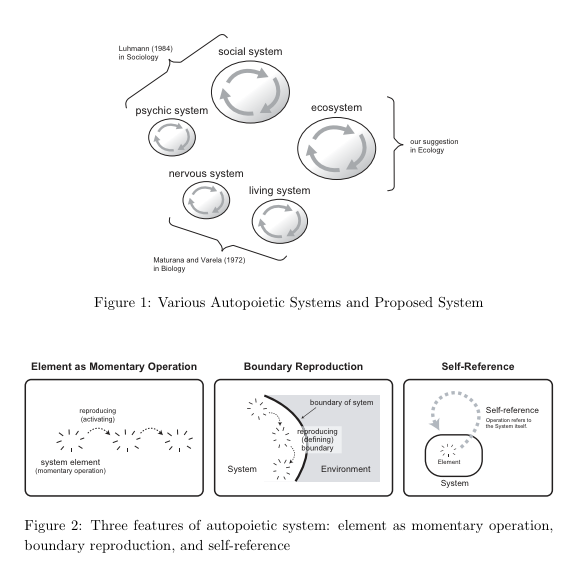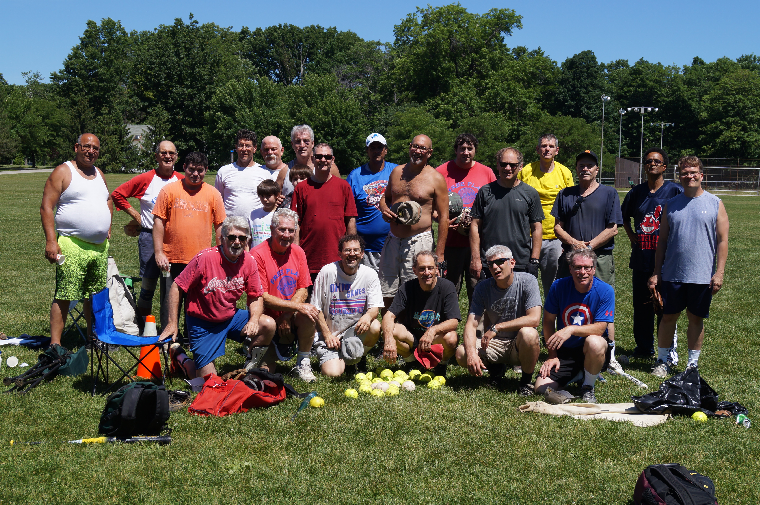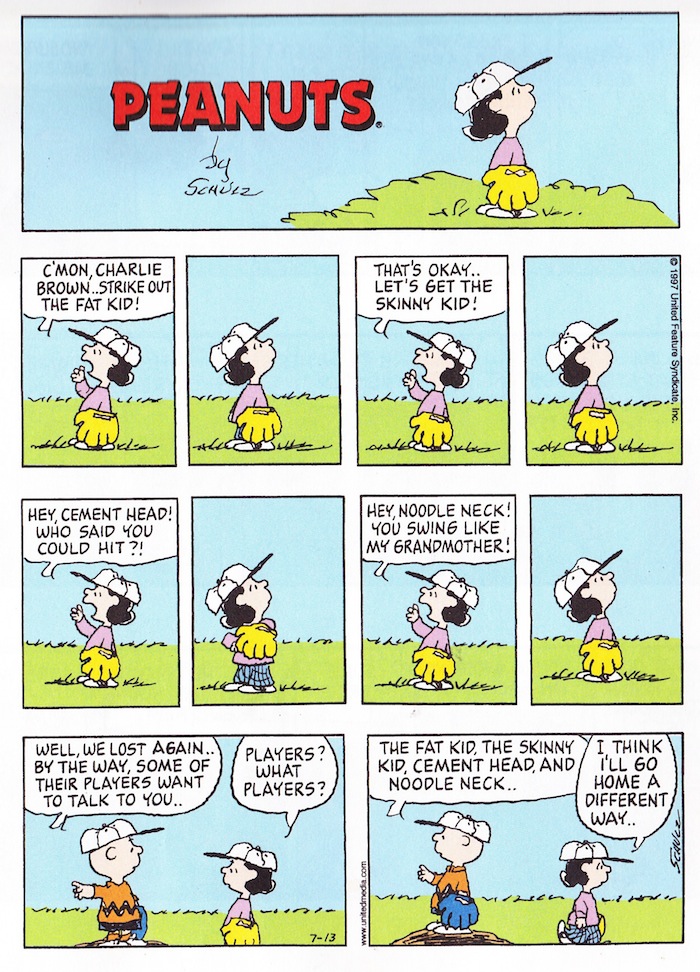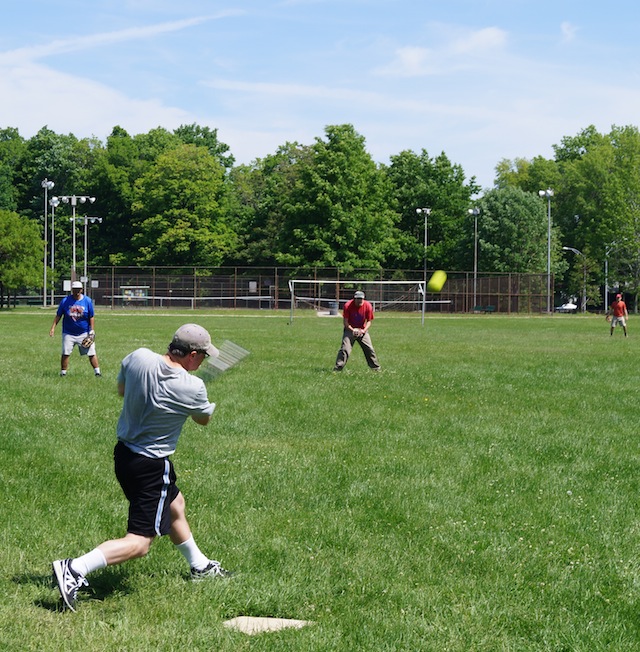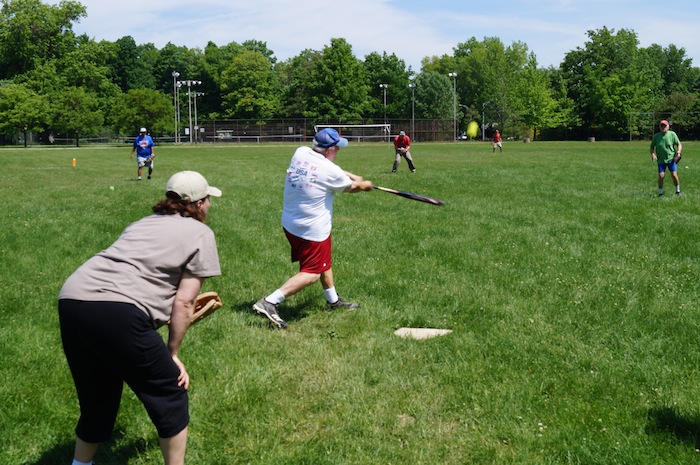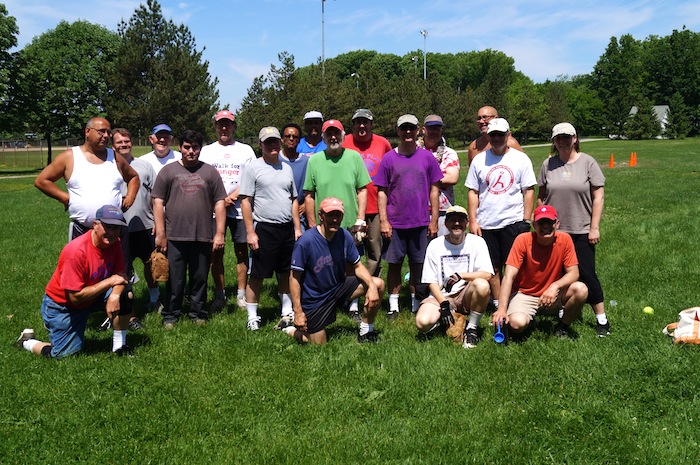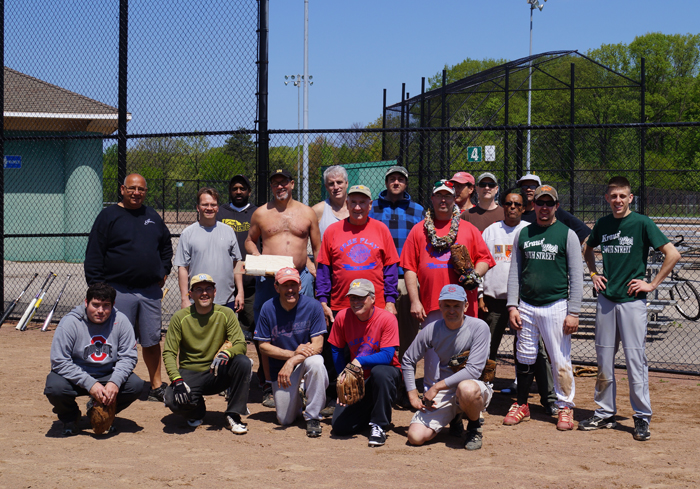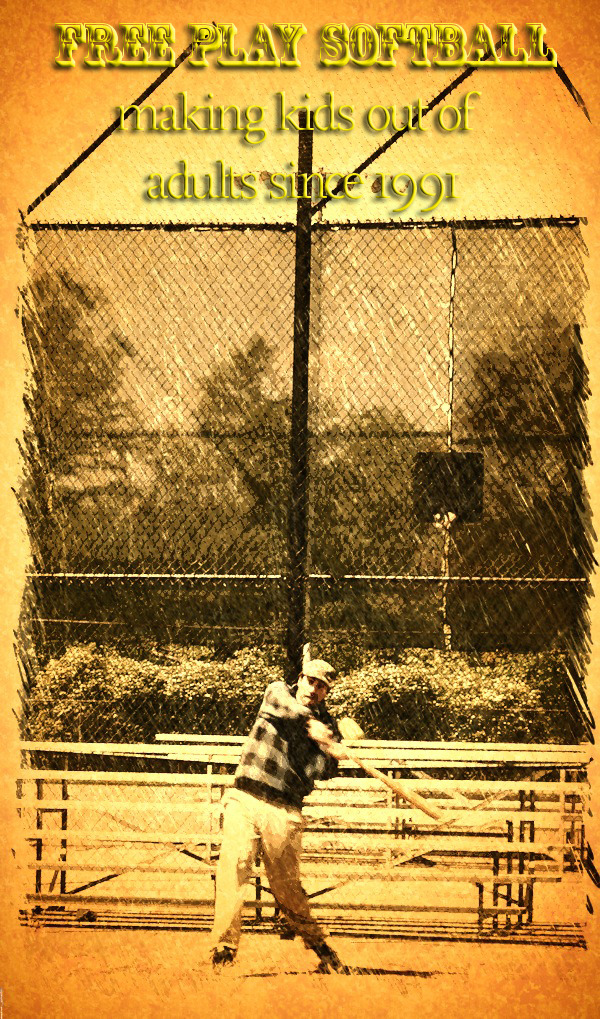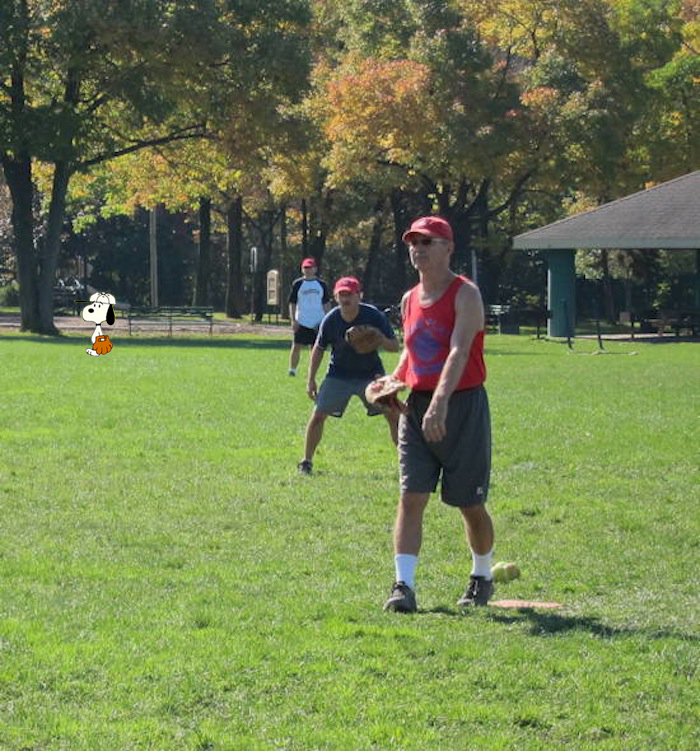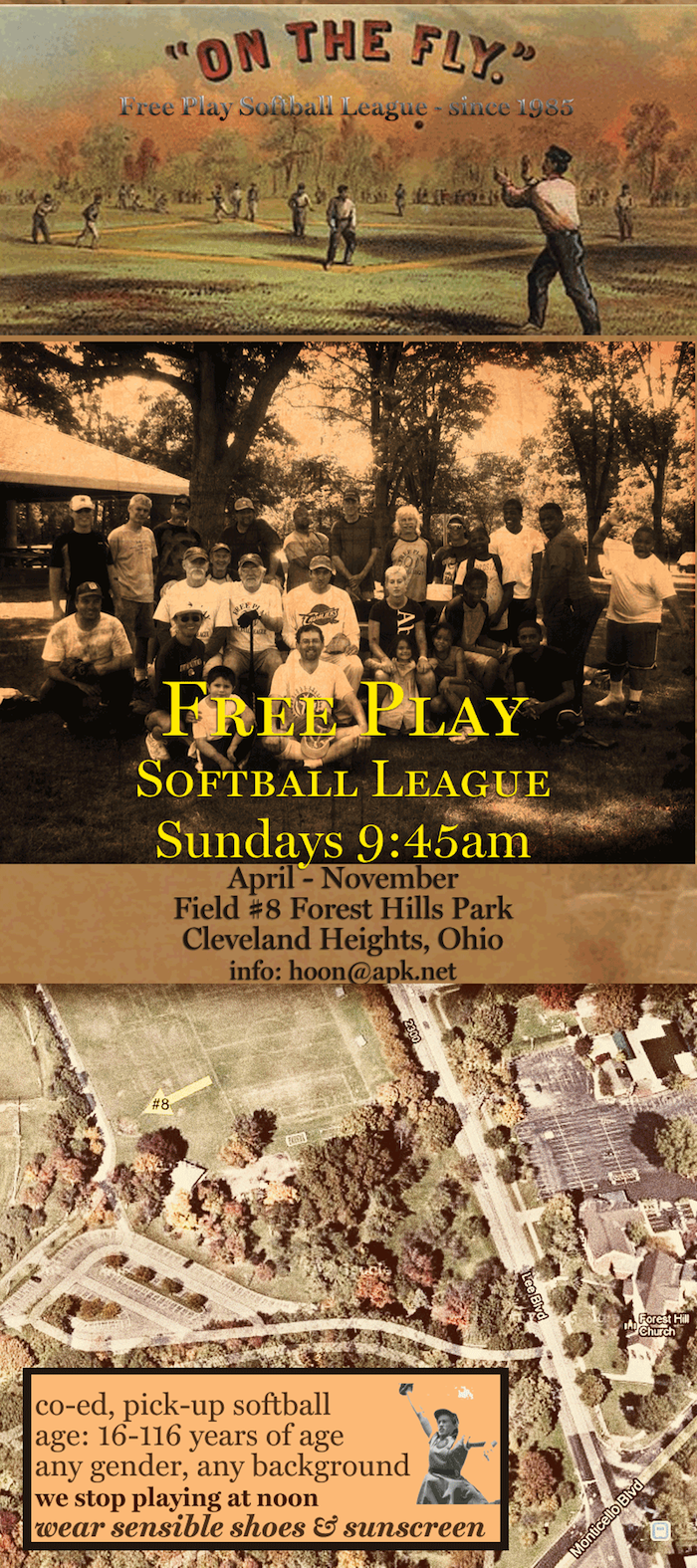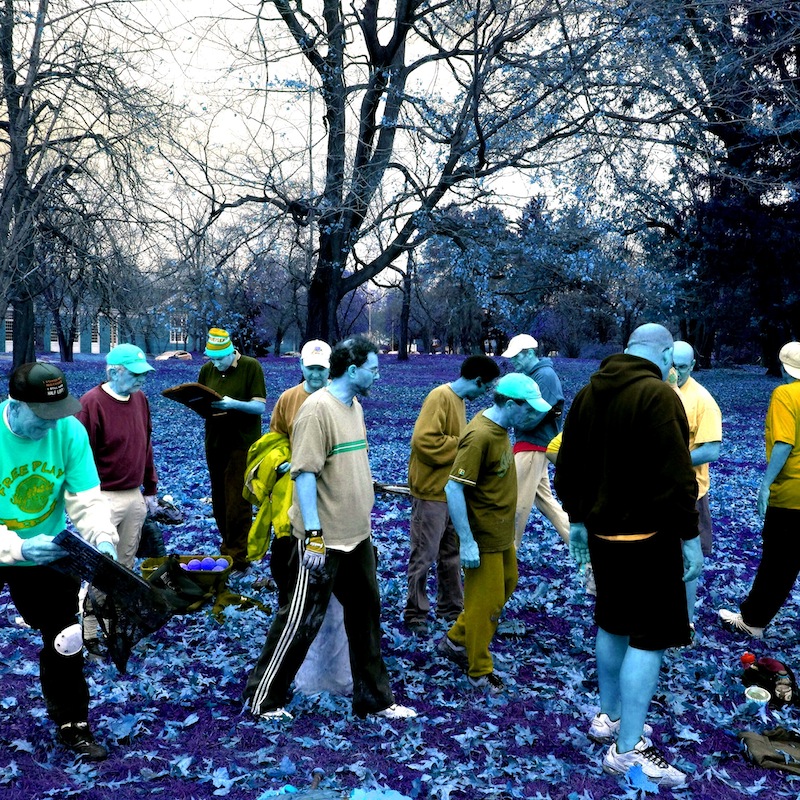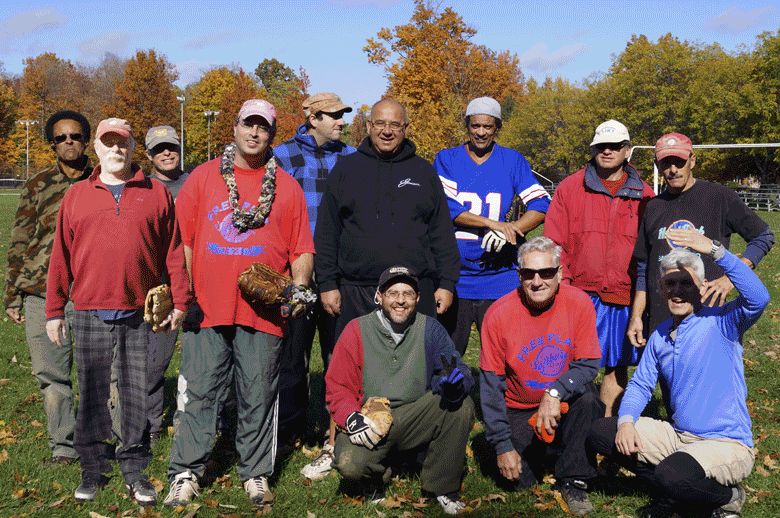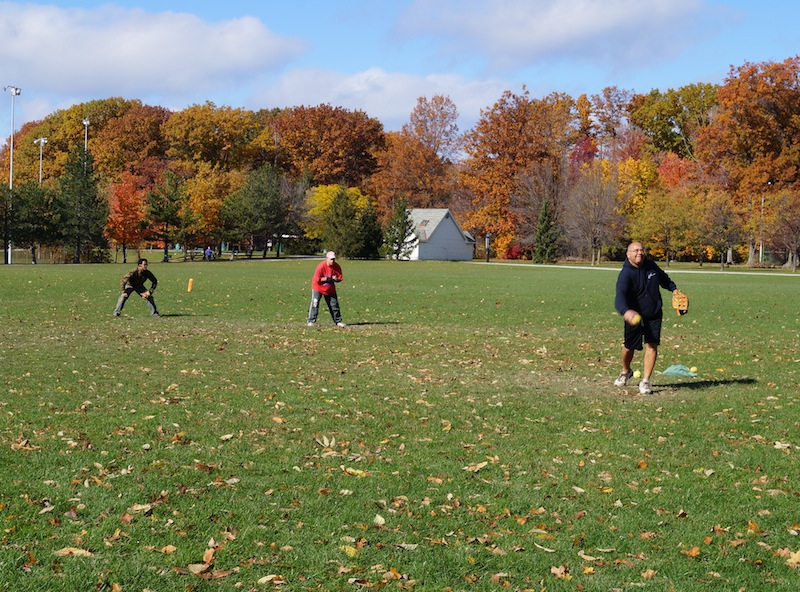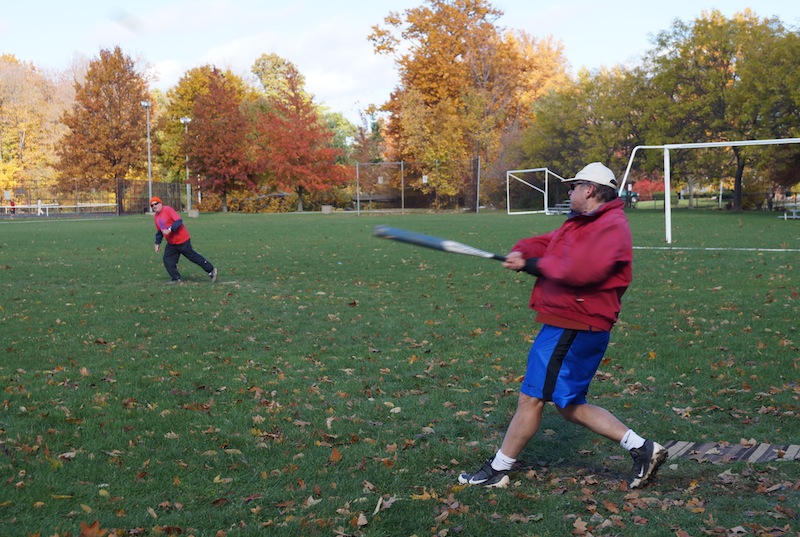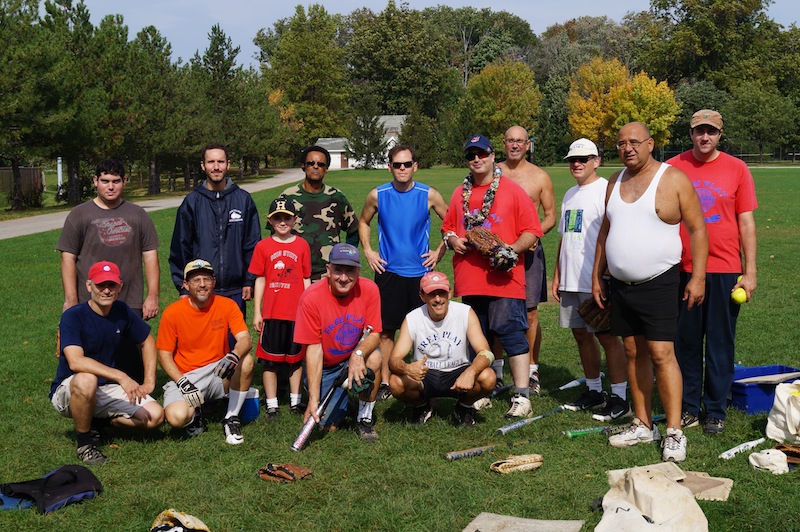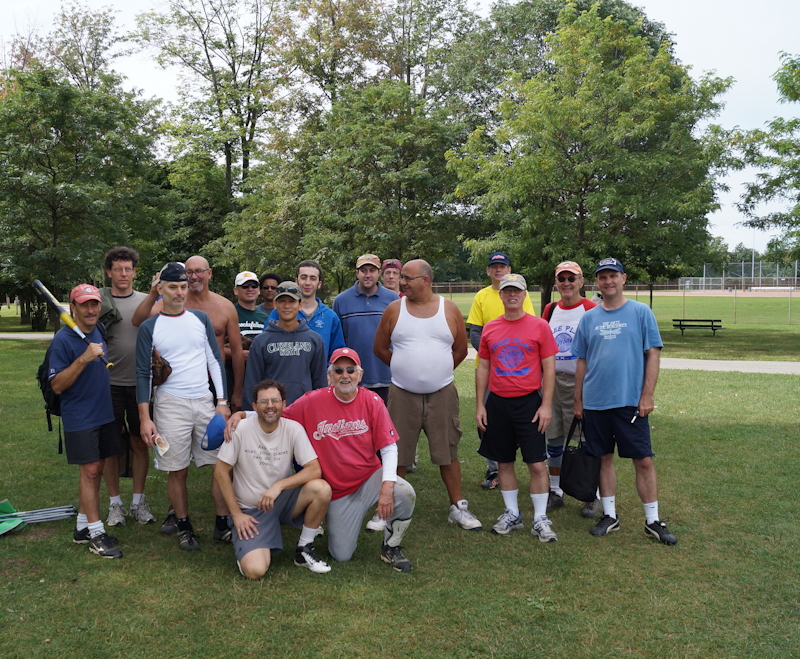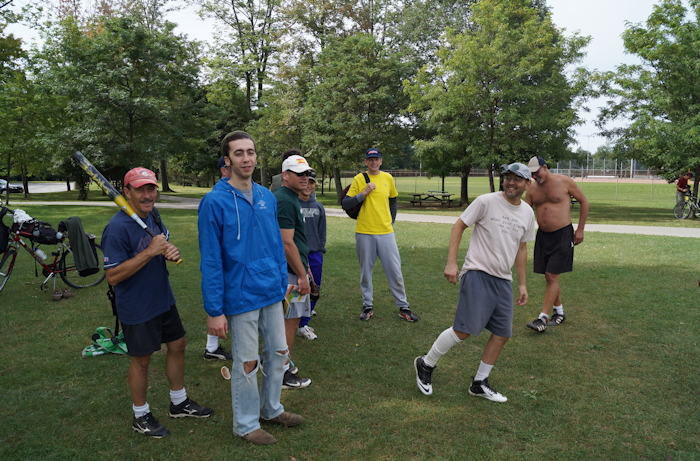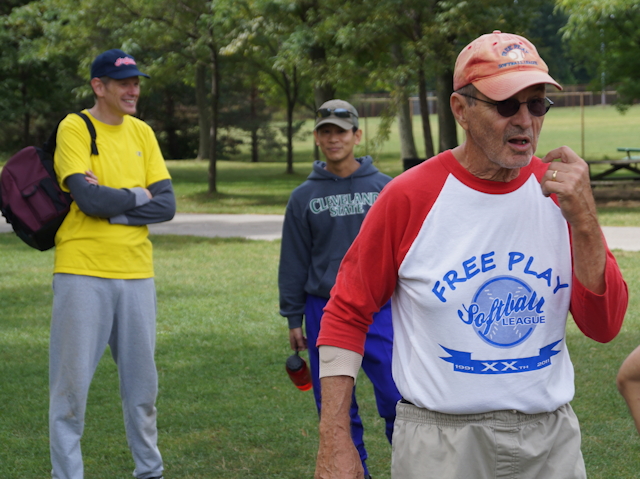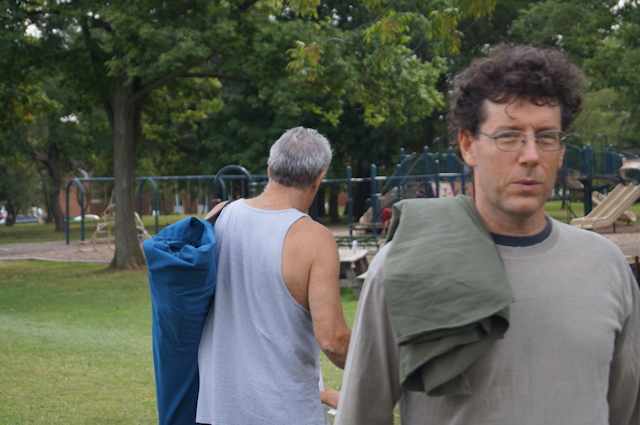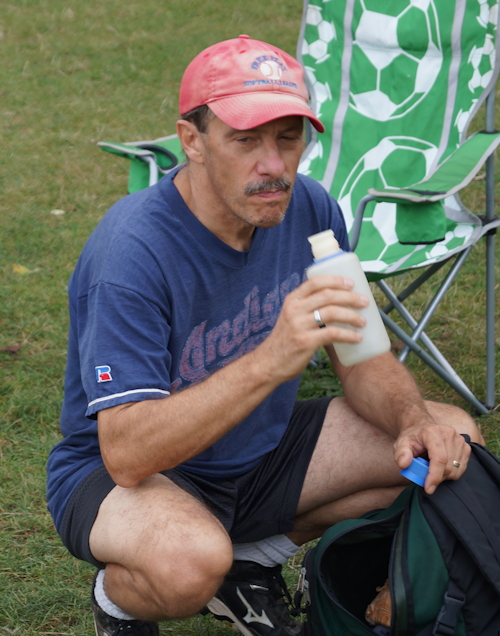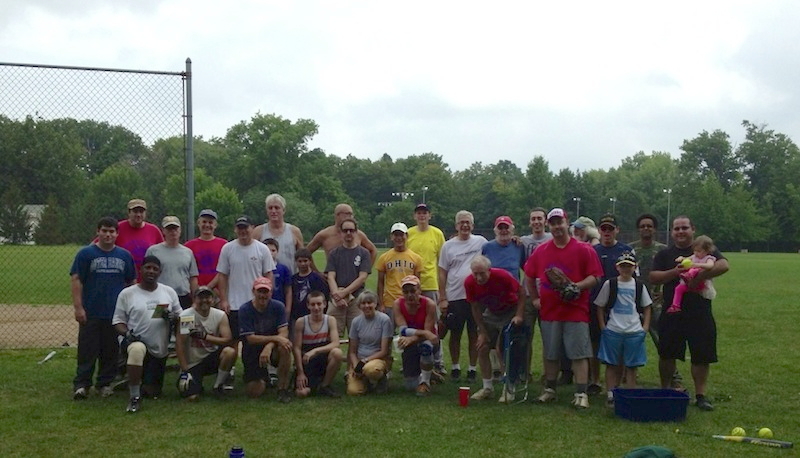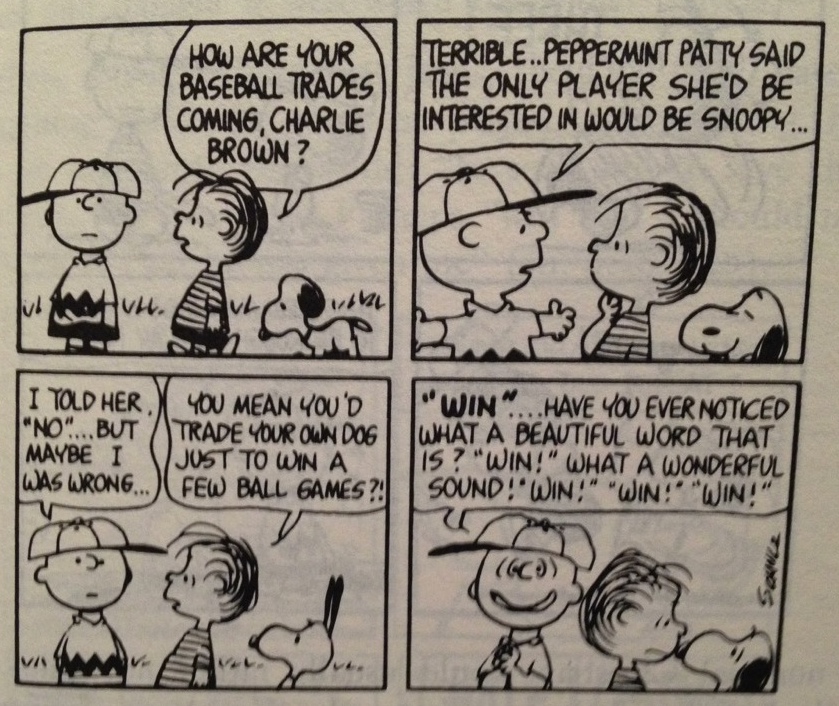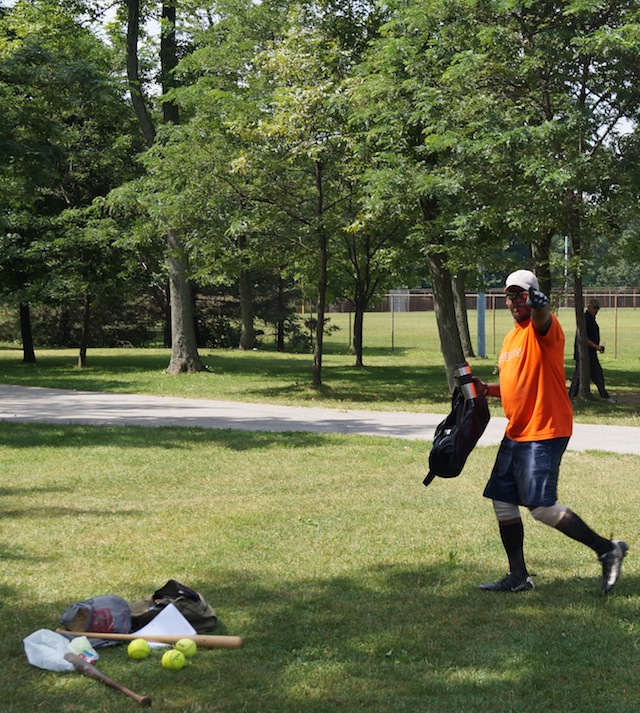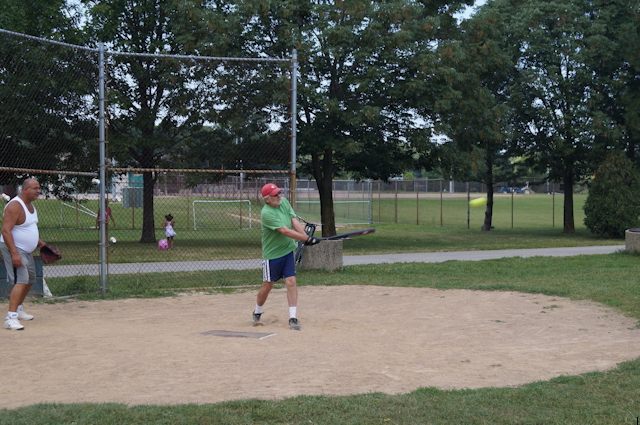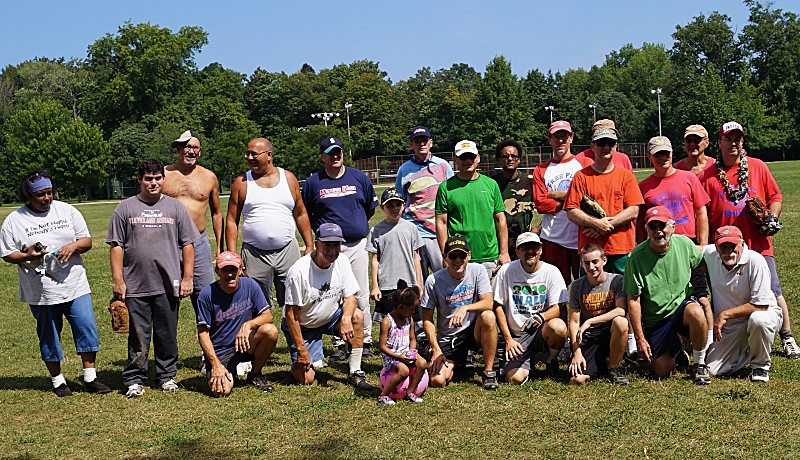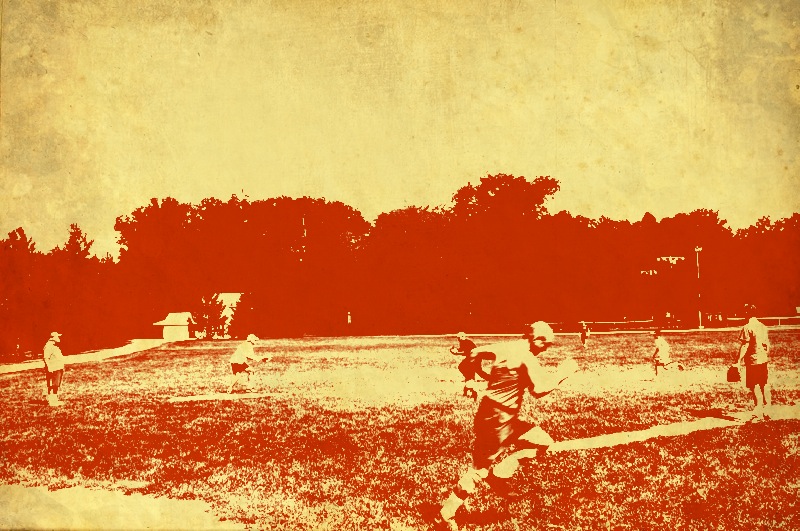
On Sunday we enjoyed an iconic Free Play Softball League contest. Perfect weather greeted us. The home team won on what surely was the first walk-off two run, two RBI sacrifice fly. It was hit by John. He was making his first appearance in a Free Play game. I later learned what brought him to our game for the first time.
The game was iconic because it obtained almost all the implicit goals of our weekly softball games: the game was well played, very close, included some absurdist theatre, and showcased several individual feats. The photo below captures a bit of our happy collective mood in the game’s aftermath.
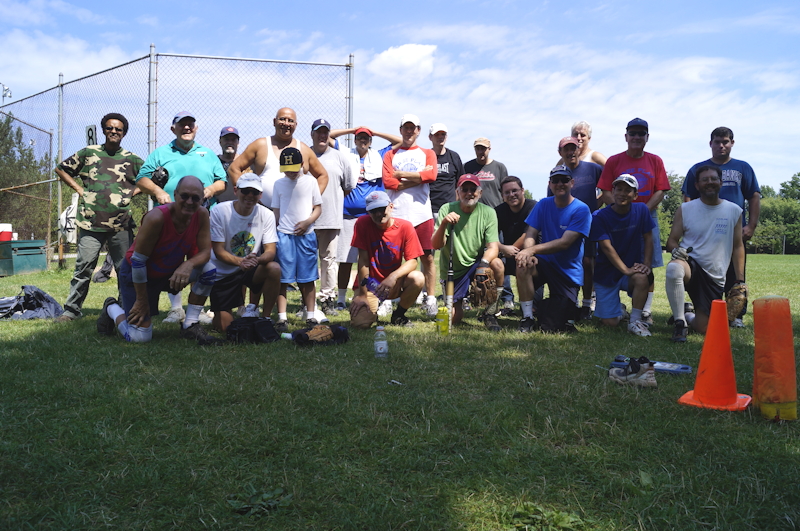
Given the “case” this particular game presented, I, with my researcher’s beanie set a kilter on my head, found the morning’s affair to be especially wondrous. We’ve been doing three experiments, one started last season, one started at the beginning of this season, and one started six weeks ago. Collective informal, ad hoc, social experiments aimed to identify possible avenues of change interest me a great deal. This past Sunday offered up a good, let us call it, ‘experimental circumstance.’
Experiment No. 1. Set in motion last season, and implemented by virtue of a voice vote, we began to call balls and strikes using a nifty affordance, a mat placed over the rubber home plate. It delineates a strike zone determined entirely as a matter of a pitch striking it on the fly. At the time it was a daring experiment because it attended to a problem only a few people felt was a problem: batters waiting for the perfect pitch under the old regimen, under which balls or strikes weren’t called. We have stuck with the experiment, having the catcher call the ball or strike. We have also gone back to the old routine under specific extreme circumstances having to do with wind velocity!
Experiment No. 2. Set in motion at the beginning of this season, and implemented willfully by me and several others, this experiment had a singular hypothesis. Should we actively promote the entertainment and sporting opportunity to our personal networks and on local bulletin boards, our numbers will increase. New players have arrived and stuck with us. We’ll see if our numbers stay robust as the weather becomes less attractive in the fall.
Experiment No. 3. Set in motion six weeks ago, and implemented without any input from the group, we have moved from having me determine the line-ups–a role I had for nine seasons–to me picking up teams school-yard style with Mark Jr. There were two basic goals, the primary one being to spread the talent around more equally, and, secondarily, to offset the advantage Mark jr. himself offers to the team he is placed on. This latter goal follows from his own tracking of the performance of his weekly, temporary team. By doing so he quantifies our results and certifies that his team wins 75% of the time.
(I’m tempted to say we’ve also been doing a meta or over-arching experiment that has something to do with giving me such a hand in the proceedings! As I mentioned to Kurt on Sunday, if I’m bossy, it’s the only day of the week I’m like a boss. Oddly, my imperial authority is partly rooted in the fact that I carry the collective equipment in the trunk of my Civic, and store all of it over the winter. He who trucks the crown and throne and battle gear. . .)
Because of this secondary goal of picking two teams, offsetting Mark Jr.’s track record, he and I have figured out a rough formula. My team is always the home team, and, I get the first pick, and, I start with longtime player Francis, and, in the fourth round Mark Jr. makes up for my extra player, and, finally, we may haggle over the last few picks.
Francis is the key gimme because he plays shortstop. Mark Jr. brings his own performative edge to his own team because he is a lock-down shortstop on our bumpy grassy infield. Others among us have tried their hand at shortstop, yet is has come down to Mark Jr. and plucky Francis.
This approach held until last week. Experiment No. 3 constitutes a series matching one person’s picks against a second person’s picks. In the experiment MArk and I determine our own line-ups, figure out in which slot players bat.

The 15-8 game was the only game where some players thought the distribution of players at the outset determined the outcome of the game. Mark Jr. has won 50% of his games. So far this experiment is progressing. Its most positive effect so far is twofold. First, players no longer feel my solitary, inept picking is ruining their chance to win. Second, when players express displeasure with the line-up, the blame is distributed to two possible culprits. The experiment has dramatically dampened second guessing about weekly competitive balance.
An Epic Fly
We play on a diamond with a screened backstop and no other fences. (Our field reminds me of the country fields I played on in Vermont decades ago.) As far as I know, this is different than the set-up for most of the (higher-than-our-modest level) slow pitch softball played year in and year out in our region. Next door to our favored wide open field #8 are four manicured, fenced, typical fields. On those fields, hard hit drives and flies can leave the field in classic home run fashion. On our field the hitter probably has to run out a home run. Outfielders, especially when the field is dry and hard play to prevent balls from skittering past them.
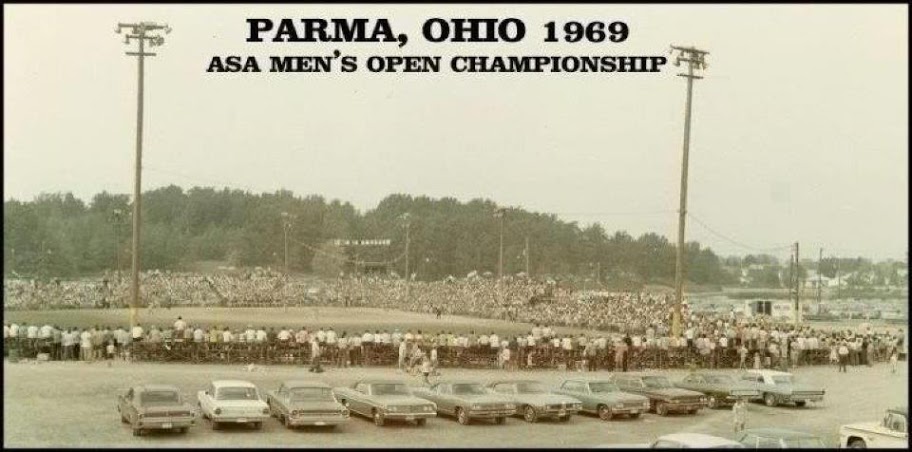
Parma’s State Road Park, one of upper level softball’s most storied diamonds
Sunday, John, a friend of Carman, shows up to play with us for the first time. He goes out to shortstop for our batting rounds. He looks experienced. He’s wearing actual baseball/softball jersey pants. He’s big. Then he takes a few practice swings, and the ball just soars off his bat.
I think to myself, “He’s pro.” This is my way of stating what was obvious to me, this is a high level player, one whose hitting approach is to launch the pitch over the fence. And, then I thought, here’s a guy who offsets Mark Jr.. And, this meant we might just do a straight back and forth choosing of players for the first time ever.
So we did. Francis got to play with Mark jr. and happily showed his mettle and versatility with one of the season’s most stellar outfield catches, a running chase-down of a falling bullet.
It came down to the last inning. The visitors took a 13-9 lead in the top half of the inning. In the bottom half, the home team grabbed three runs and John, the brawny newcomer stepped up to the dish with the bases juiced. Francis, in left field, was something like 350+ feet away. In a fenced-in softball field he would have been standing on the other side of the leftfield fence.
I don’t know squat about elite softball but I suspect top level players who come to the plate with the game on the line, one run behind, bases loaded, knowing any hit wins the game, nevertheless want to send the ball into a definitive orbit.
Mark Jr., for whatever reason, commanded his pitcher move to short, and he took the ball and stepped to the mound. Okay, he stepped to not a mound but, rather, to a rugged gash where a mound never existed. He threw some practice pitches. He took some grief from the home team. Tom, our elder was catching and warned Mark Jr. about “too much arc.”
Standing on the sideline, I understood this was a case of mano-y-mano, taking the game literally in one’s own hand, live by the sword or die by the sword, gamesmanship. Ha! Absurd! Crazed! It was a beautiful distillation of everything our free play game isn’t ordinarily about–yet our game can be about anything.
Then John blasted a 3-2 pitch in the direction of heaven itself. There’s no fence! I half expected the fly ball to sprout a parachute on the way down. The outfielder catches the ball and three runners tag up. It wasn’t even close. The tying run scores and the next, winning, run scores and would have beat any throw.
Game, but not match. John, you da man. (It turns out John is visiting us to get reps before autumn’s league and tournament league action.

